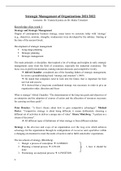Summary
Summary Introduction to Secret Affairs Notes on Readings - GRADE 7,5
- Course
- Institution
Summary of the reading materials for the final exam (2023) for Introduction to Secret Affairs Notes on Readings. INCLUDES notes from (Total: 40 pages): See * Summary List * on page 1.
[Show more]











